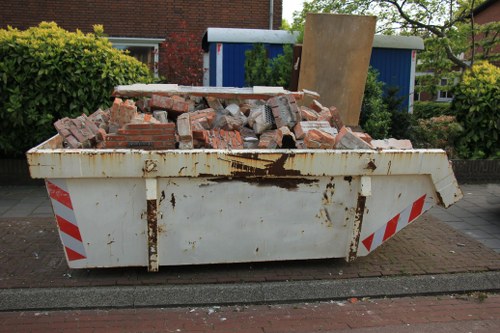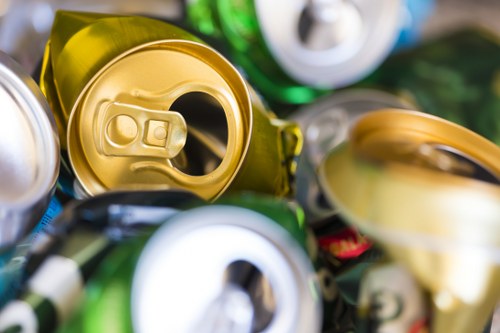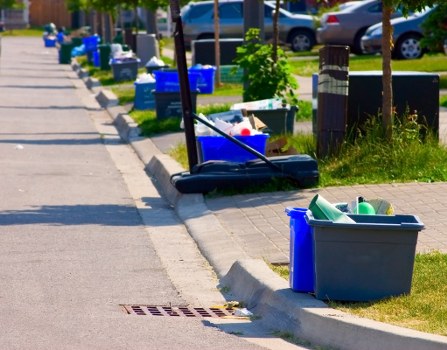Waste Disposal in Mega Waste: Challenges and Innovative Solutions
Introduction to Waste Disposal in Mega Cities

Mega cities around the world are grappling with an ever-increasing challenge: waste disposal. The rapid urbanization and population growth in these urban centers have led to unprecedented amounts of waste generation, putting immense pressure on existing waste management systems.
Effective waste disposal is not just a matter of maintaining cleanliness but also of ensuring public health, environmental sustainability, and economic efficiency. As mega cities continue to expand, finding sustainable and efficient waste disposal methods becomes critical.
This article delves into the various aspects of waste disposal in mega cities, exploring the challenges faced, the methods employed, and the innovative solutions emerging to address this pressing issue.
Challenges of Waste Disposal in Mega Cities

One of the primary challenges in waste disposal within mega cities is the sheer volume of waste generated. With populations exceeding millions, the logistics of collecting, transporting, and processing waste become increasingly complex.
Limited land availability restricts the expansion of traditional landfills. Many mega cities are constrained by geography, surrounded by water bodies, or lack sufficient space to dedicate vast areas for waste disposal sites.
Additionally, the diversity of waste materials complicates recycling and processing efforts. Mixed waste streams, containing everything from organic matter to hazardous materials, require sophisticated sorting and treatment processes to mitigate environmental impact.
Traditional Waste Disposal Methods

Landfills have long been the go-to method for waste disposal in mega cities. They are cost-effective and relatively simple to manage. However, landfills pose significant environmental issues, including the release of methane, a potent greenhouse gas, and the potential for groundwater contamination.
Incineration is another common method, involving the combustion of waste to reduce its volume and generate energy. While incineration can help manage waste effectively, it often results in air pollution and requires stringent emission controls to protect public health.
Recycling has gained prominence as a sustainable waste management strategy. By reprocessing materials like paper, glass, and plastics, recycling reduces the need for raw material extraction and minimizes landfill usage. However, recycling rates in mega cities are often hindered by inadequate infrastructure and public participation.
Innovative Waste Disposal Solutions

As traditional methods face limitations, mega cities are turning to innovative solutions to enhance waste disposal efficiency and sustainability.
Waste-to-Energy (WTE) technologies convert non-recyclable waste materials into usable heat, electricity, or fuel. By harnessing the energy potential of waste, WTE facilities can alleviate the strain on landfills and contribute to the energy grid.
Biodegradable waste can be processed through anaerobic digestion, producing biogas that serves as a renewable energy source. This method not only reduces the volume of waste but also generates valuable byproducts for energy production.
Advanced Recycling Techniques

To improve recycling rates, mega cities are investing in advanced sorting technologies. Automated systems using artificial intelligence and machine learning can efficiently separate recyclable materials from mixed waste streams, enhancing the purity and quality of recycled products.
Another promising approach is circular economy initiatives, which focus on designing products for longevity, reuse, and recyclability. By encouraging manufacturers to adopt sustainable practices, cities can reduce the overall waste generated and promote a more sustainable consumption model.
Community-based recycling programs also play a crucial role. Educating the public about the importance of recycling and providing accessible collection points can significantly increase participation rates and reduce contamination in recycling streams.
Case Studies: Successful Waste Management in Mega Cities

Singapore: A Model of Efficiency
Singapore has implemented a comprehensive waste management strategy that emphasizes waste reduction, recycling, and energy recovery. The Semakau Landfill, an offshore landfill, serves as a model for sustainable waste disposal, incorporating stringent environmental safeguards and promoting recycling initiatives.
The city's focus on public education and participation has been instrumental in achieving high recycling rates. Additionally, Singapore's investment in WTE technologies has enabled the city to generate clean energy from its waste, contributing to its energy needs.
Moreover, policies like the Resource Sustainability Act mandate that certain waste disposal targets are met, ensuring that waste management practices remain sustainable and environmentally friendly.
Tokyo: Embracing Technology
Tokyo's approach to waste disposal involves leveraging technology to enhance efficiency. The city employs advanced waste sorting facilities equipped with robotics and AI to streamline the recycling process.
Tokyo also promotes zero waste initiatives, encouraging residents and businesses to minimize waste generation through responsible consumption and effective waste segregation.
The integration of smart waste bins, equipped with sensors to monitor waste levels, optimizes collection routes and schedules, reducing operational costs and minimizing environmental impact.
Environmental and Health Impacts of Waste Disposal

Improper waste disposal can have severe environmental and health consequences. Landfills can lead to soil and water contamination, affecting both ecosystems and human health.
Air pollution from incineration processes releases harmful pollutants, contributing to respiratory issues and other health problems among urban populations.
Moreover, unmanaged waste attracts pests and disease vectors, posing additional public health risks. Effective waste disposal is thus integral to maintaining the well-being of residents in mega cities.
Sustainable Practices and Future Directions

To create a sustainable future, mega cities must adopt comprehensive waste management practices that integrate reduction, recycling, and energy recovery.
Investment in infrastructure, such as modern recycling facilities and WTE plants, is essential to handle the increasing waste volumes efficiently.
Furthermore, fostering a culture of sustainability through education and policy measures can drive long-term improvements in waste disposal practices.
Policy and Regulation
Government policies play a critical role in shaping waste management strategies. Implementing stringent regulations on waste disposal and incentivizing recycling can drive significant changes in how waste is handled.
Policies supporting research and development in waste management technologies can lead to innovative solutions that address the unique challenges of mega cities.
Collaboration between government agencies, private sector stakeholders, and the community is essential to develop and implement effective waste disposal strategies.
Public Participation and Awareness
Engaging the public is vital for the success of waste management initiatives. Awareness campaigns that educate residents about the importance of waste reduction and proper disposal can enhance participation rates.
Community-driven initiatives, such as neighborhood recycling programs and clean-up drives, foster a sense of responsibility and collective action towards sustainable waste management.
Incentivizing behaviors like composting and reducing single-use plastics can further contribute to minimizing waste generation at the source.
Technological Innovations in Waste Disposal

Emerging technologies offer promising solutions to the waste disposal challenges faced by mega cities. Innovations such as smart waste management systems utilize data analytics and IoT devices to optimize waste collection and processing.
3D printing with recycled materials is another innovative approach, transforming waste into valuable products and reducing the need for raw material extraction.
Biotechnological advancements, including the use of microorganisms to degrade organic waste, provide environmentally friendly alternatives to traditional waste disposal methods.
Automation and Robotics
Automation and robotics enhance the efficiency and accuracy of waste sorting processes. Automated systems can handle large volumes of waste with minimal human intervention, reducing labor costs and increasing processing speeds.
Robotic sorting machines equipped with sensors and AI can accurately identify and separate different types of waste, improving the quality of recycled materials.
These technologies not only streamline operations but also mitigate the risks associated with manual waste handling, such as exposure to hazardous materials.
Biogas Production
Biogas production from organic waste is a sustainable energy solution gaining traction in mega cities. Anaerobic digestion facilities break down organic matter, producing biogas that can be used for heating, electricity, or as a fuel source.
This process not only generates renewable energy but also reduces the volume of waste sent to landfills, lowering greenhouse gas emissions.
Integrating biogas production into waste management systems enhances overall sustainability and contributes to the energy security of mega cities.
Economic Implications of Waste Disposal

Effective waste disposal systems can have significant economic benefits for mega cities. Reducing waste goes hand-in-hand with lowering disposal costs, conserving valuable land resources, and generating revenue through recycling and energy recovery.
The waste management sector also creates numerous job opportunities, ranging from collection and processing to research and technology development.
Investing in sustainable waste disposal infrastructure can stimulate economic growth and enhance the overall quality of life in mega cities.
Cost-Benefit Analysis
Implementing modern waste disposal technologies requires substantial initial investments. However, the long-term benefits, including reduced environmental impact and operational costs, often outweigh the upfront expenses.
Cost-effective waste management strategies, such as source segregation and community recycling programs, can maximize resource utilization and minimize waste disposal costs.
Conducting thorough cost-benefit analyses ensures that waste management initiatives are economically viable and sustainable.
Revenue from Recycled Materials
Recycling not only conserves resources but also generates revenue by selling recycled materials. Metals, plastics, and paper products can be processed and sold to industries, creating a circular economy that benefits both the environment and the economy.
Incentivizing recycling through subsidies and tax benefits can further enhance the profitability of recycling operations, encouraging more businesses to participate.
Moreover, establishing partnerships with manufacturers ensures a steady demand for recycled materials, sustaining the economic viability of recycling programs.
Public Health Considerations

Proper waste disposal is crucial for safeguarding public health in mega cities. Unmanaged waste can lead to the spread of diseases, attract pests, and contaminate water and air resources.
Implementing effective waste management systems reduces the risk of infectious diseases and promotes a healthier living environment for urban populations.
Ensuring access to clean water and maintaining sanitation standards are integral components of public health that are directly influenced by waste disposal practices.
Hazardous Waste Management
Handling hazardous waste requires specialized disposal methods to prevent environmental contamination and health hazards. Industrial, medical, and electronic wastes contain toxic substances that must be managed with care.
Establishing dedicated facilities for hazardous waste ensures that these materials are treated and disposed of safely, minimizing their impact on human health and the environment.
Strict regulations and enforcement are essential to ensure that hazardous waste is handled responsibly and that best practices are followed across all sectors.
Reducing Health Risks
Minimizing health risks associated with waste disposal involves improving collection systems to prevent open dumping and illegal landfill operations.
Public awareness campaigns educate residents about the dangers of improper waste disposal and encourage safe disposal practices.
Providing adequate waste collection services ensures that waste is managed efficiently, reducing exposure to harmful pathogens and pollutants.
Sustainability and Environmental Protection

Waste disposal practices have a profound impact on environmental sustainability. Sustainable waste management reduces the depletion of natural resources, lowers greenhouse gas emissions, and preserves biodiversity.
Adopting eco-friendly disposal methods, such as recycling and WTE, aligns with global efforts to combat climate change and promote environmental stewardship.
Integrating sustainability into waste management policies ensures that mega cities can thrive without compromising the health of the planet.
Resource Conservation
Conserving resources through recycling and reuse minimizes the demand for raw materials, reducing environmental degradation associated with extraction and processing.
Promoting sustainable consumption patterns encourages individuals and businesses to use resources more efficiently, further enhancing conservation efforts.
Efficient resource management contributes to the overall sustainability of waste disposal systems, ensuring their long-term viability.
Climate Change Mitigation
Effective waste management plays a role in mitigating climate change by reducing greenhouse gas emissions from landfills and incineration processes.
Implementing WTE technologies and biogas production reduces reliance on fossil fuels, contributing to lower carbon emissions.
Encouraging sustainable practices in waste disposal supports global climate goals and fosters resilience against environmental challenges.
Conclusion

Waste disposal in mega cities presents a complex challenge that intersects with environmental sustainability, public health, and economic efficiency. As urban populations continue to grow, the need for innovative and sustainable waste management solutions becomes increasingly critical.
By embracing advanced technologies, fostering public participation, and implementing comprehensive policies, mega cities can navigate the challenges of waste disposal effectively. The integration of recycling, energy recovery, and sustainable practices ensures that waste management systems not only handle the current waste volumes but also adapt to future urbanization trends.
Ultimately, the success of waste disposal strategies in mega cities hinges on collaboration among government bodies, private sector stakeholders, and the community. By working together, sustainable and efficient waste management can be achieved, paving the way for healthier, cleaner, and more resilient urban environments.
Take Action Today
Are you ready to make a difference? Contact us today to learn more about sustainable waste disposal solutions for your mega city.
Join the movement towards a greener future by implementing innovative waste management strategies. Book your service now and be part of the change.